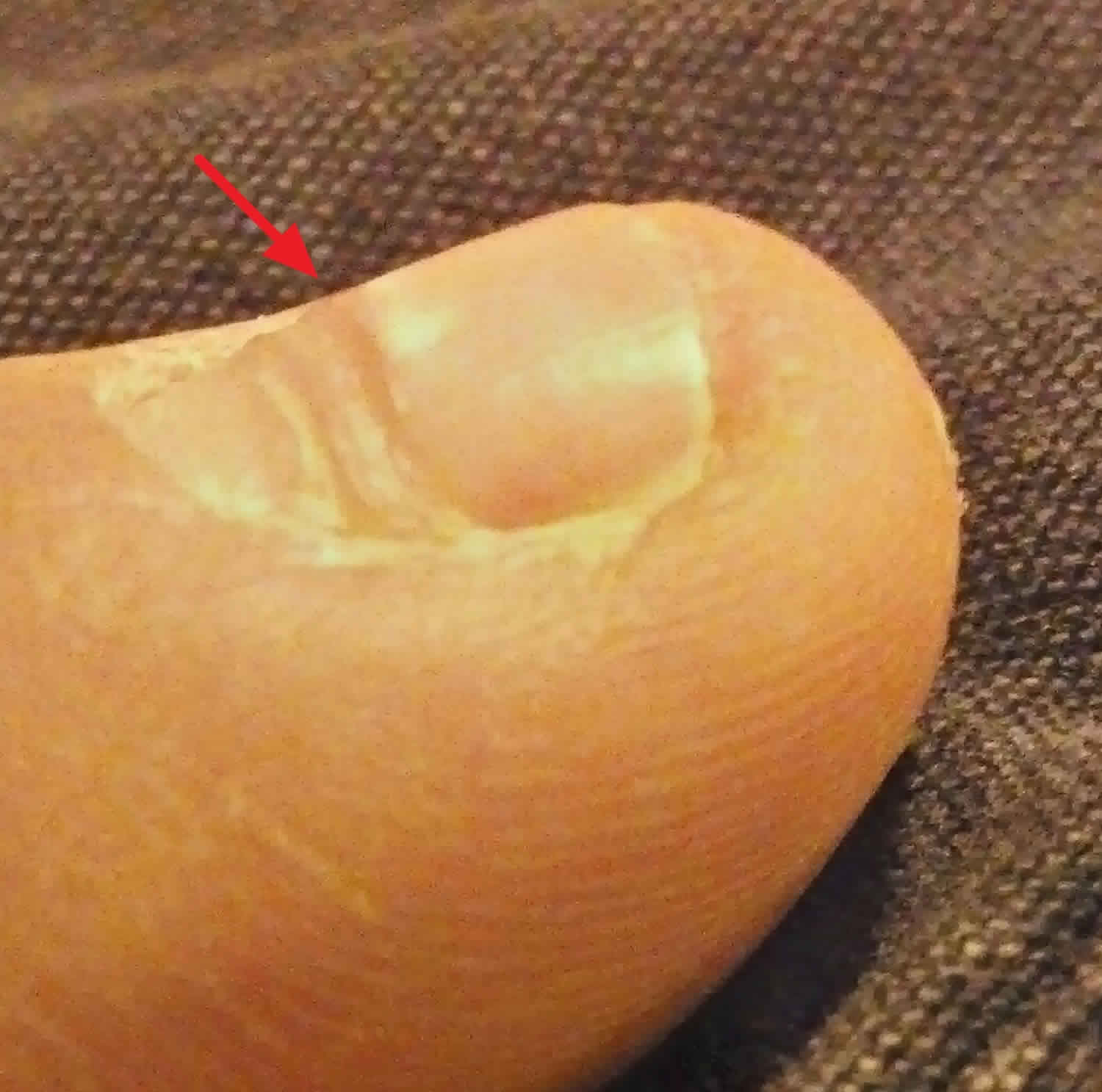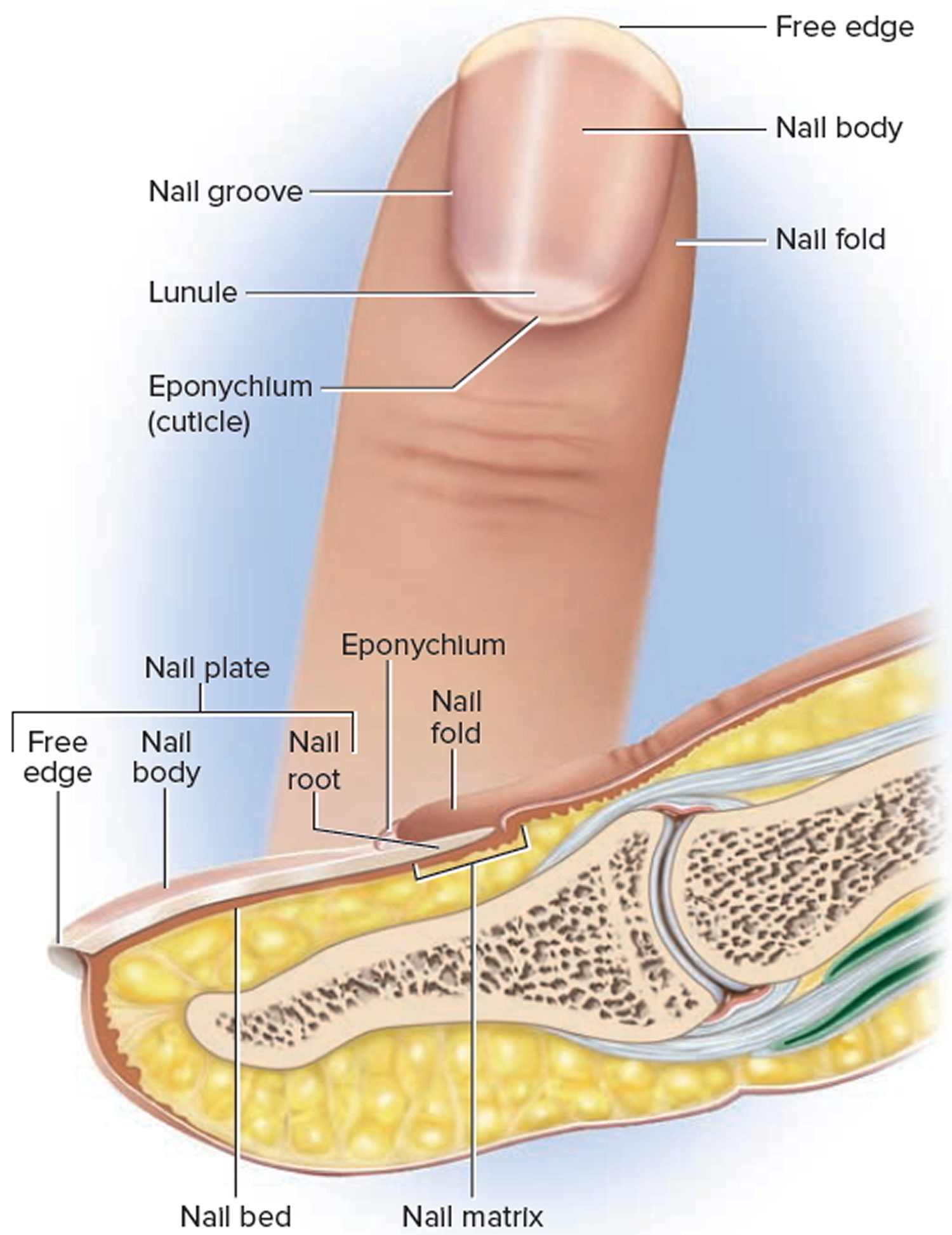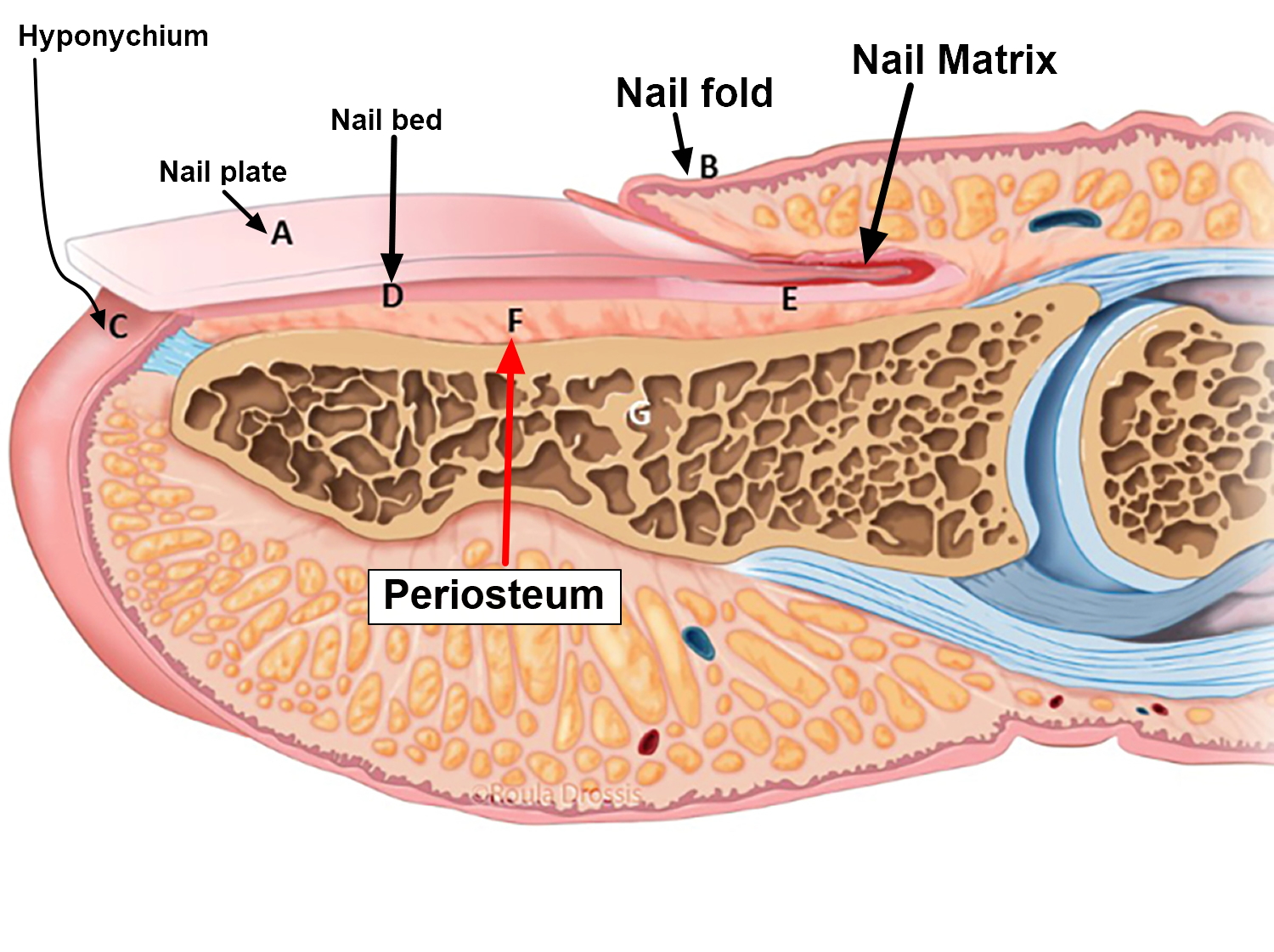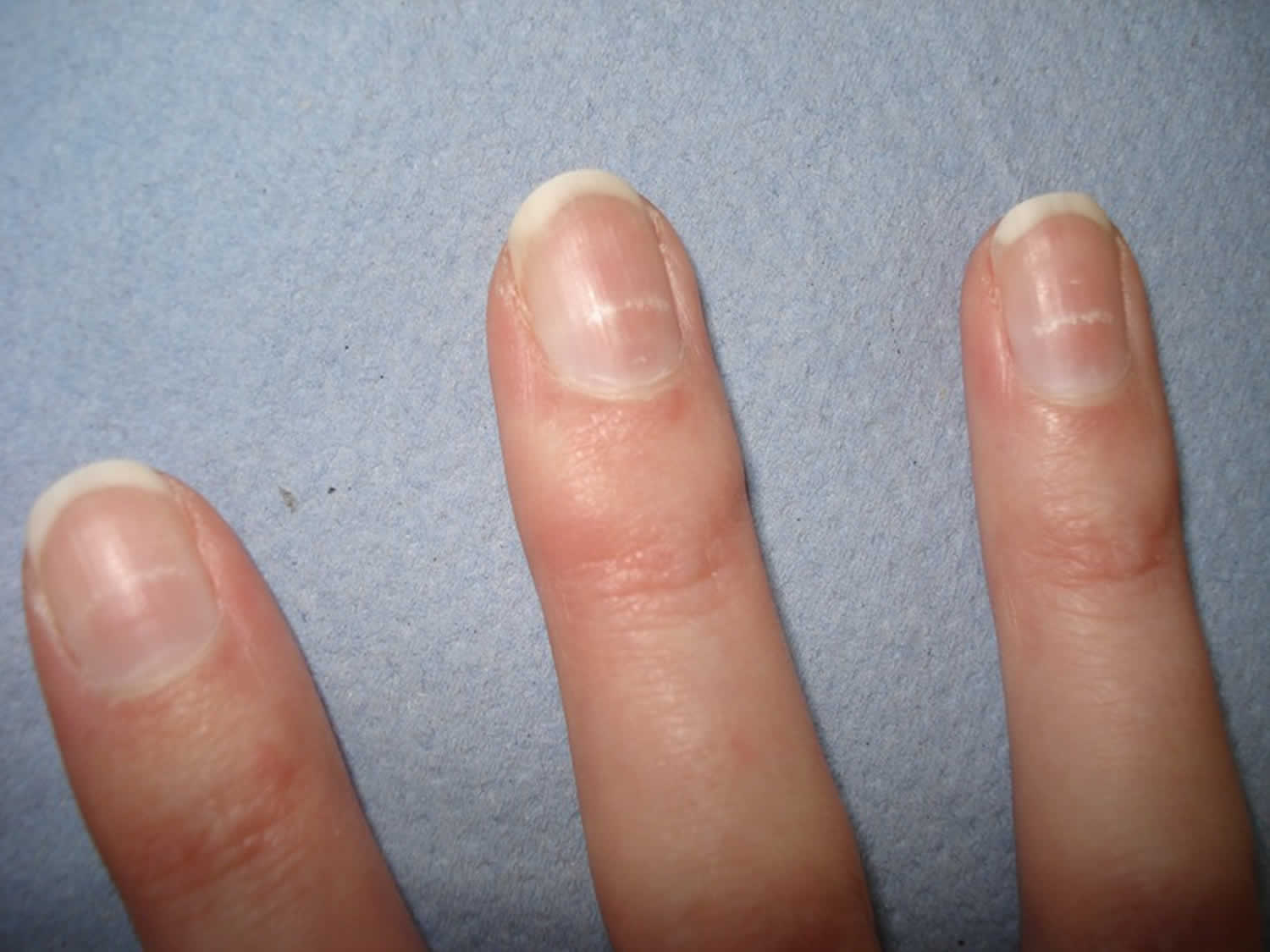Beau’s lines
Beau’s lines or Beau lines, are horizontal (transverse) depression lines in the nail plate that run parallel to the shape of the white, moon-shaped portion of the nail bed (lunula) seen at the nail’s origin. Beau’s lines are due to an acute reduction in nail growth commonly associated with acute systemic illness, nail infection or nail injury. Direct fingernail trauma can cause Beau’s lines in individual digits; however, when multiple digits are involved it is often a sign of a severe systemic disease 1.
Beau’s lines result from a sudden interruption of nail keratin synthesis and grow distally with the nail plate. As the nail grows, the Beau’s lines can disappear. Beau’s lines appear approximately 4–8 weeks post-systemic assault; the nail plate takes about 9 months to regrow assuming resolution of the underlying condition 2.
Beau’s lines can be caused by trauma or local disease involving the nail fold. Beau’s lines can vary based upon the width or depth of the depression, reflecting the duration or extent of the damage. When Beau’s lines are present in all nails at a similar location on the nail plate, they are likely to have a systemic cause. Beau’s lines may also result from metabolic, inflammatory, or traumatic influences.
Figure 1. Fingernail
Figure 3. Beau’s lines with shedding of the nail plate (onychomadesis)
Beau’s lines causes
Beau’s lines can be caused by trauma or local disease involving the nail fold. Conditions associated with Beau’s lines include uncontrolled diabetes and peripheral vascular disease, as well as illnesses associated with a high fever, such as scarlet fever, measles, mumps and pneumonia. Beau’s lines can also be a sign of zinc deficiency.
Wester et al. 3 reported Beau’s lines with onychomadesis involving fingernails and toenails in a patient suffering meningitis followed by a large pulmonary abscess. Gugelmann and Gaieski 4 showed a milder case of Beau’s lines without onychomadesis following a severe cardiac arrest.
Causes of Beau’s lines:
- uncontrolled diabetes
- peripheral vascular disease
- illnesses associated with a high fever, such as scarlet fever, measles, mumps and pneumonia
- trauma
- illness
- malnutrition e.g., zinc deficiency
- major metabolic condition
- hyperparathyroidism 5
- chemotherapy or other damaging event 6
- hand-foot-mouth disease 7
People of all ages and ethnic backgrounds can have Beau’s lines. Most commonly, they are seen in chemotherapy patients in reaction to a drug.
Beau’s lines signs and symptoms
Beau’s lines occur along the fingernails and the toenails. The grooves extending across the nail plate often span its entire breadth. The involvement of multiple nails may suggest a systemic cause, including a side effect from medication, but the phenomenon may be limited to just the thumb nails and big toe nails.
It is possible to measure the distance from the area where the cuticle is seen and where the nail originates (the proximal nail fold) to the leading edge of the Beau’s line to determine how much time has elapsed since the line was formed. Because fingernails grow at a rate of approximately 0.1 mm per day, and toenails grow 0.03 mm per day, the duration of the causative insult can be inferred from the width of the Beau’s furrow itself.
Recurrent disease will produce repeated transverse grooves, separated by normal nail.
Beau’s lines treatment
Beau’s lines are a retrospective indicator of various causes, and your physician may investigate for possible causes. Beau’s lines treatment is usually not necessary.
- Angel JB, Cameron DW. Beau’s lines with onychomadesis in convalescence of invasive pneumococcal disease. Oxf Med Case Reports. 2019;2019(9):omz098. Published 2019 Sep 28. doi:10.1093/omcr/omz098 https://www.ncbi.nlm.nih.gov/pmc/articles/PMC6765373[↩]
- de Berker D. What do Beau’s lines mean? Int J Dermatol 1994;33:545–6.[↩]
- Wester JP, van Eps RS, Stouthamer A, Girbes AR. Critical illness onychomadesis. Intensive Care Med 2000;26:1698–700.[↩]
- Gugelmann HM, Gaieski DF. Beau’s lines after cardiac arrest. Ther Hypothermia Temp Manag 2013;3:199–202.[↩]
- Losa I. Beau’s lines in postpartum period and hyperparathyroidism. BMJ Case Rep. 2013;2013:bcr2013201220. Published 2013 Oct 14. doi:10.1136/bcr-2013-201220 https://www.ncbi.nlm.nih.gov/pmc/articles/PMC3822214[↩]
- Kim IS, Lee JW, Park KY, Li K, Seo SJ, Hong CK. Nail change after chemotherapy: simultaneous development of Beau’s lines and Mees’ lines. Ann Dermatol. 2012;24(2):238–239. doi:10.5021/ad.2012.24.2.238 https://www.ncbi.nlm.nih.gov/pmc/articles/PMC3346925[↩]
- Shin JY, Cho BK, Park HJ. A Clinical Study of Nail Changes Occurring Secondary to Hand-Foot-Mouth Disease: Onychomadesis and Beau’s Lines. Ann Dermatol. 2014;26(2):280–283. doi:10.5021/ad.2014.26.2.280 https://www.ncbi.nlm.nih.gov/pmc/articles/PMC4037694[↩]









